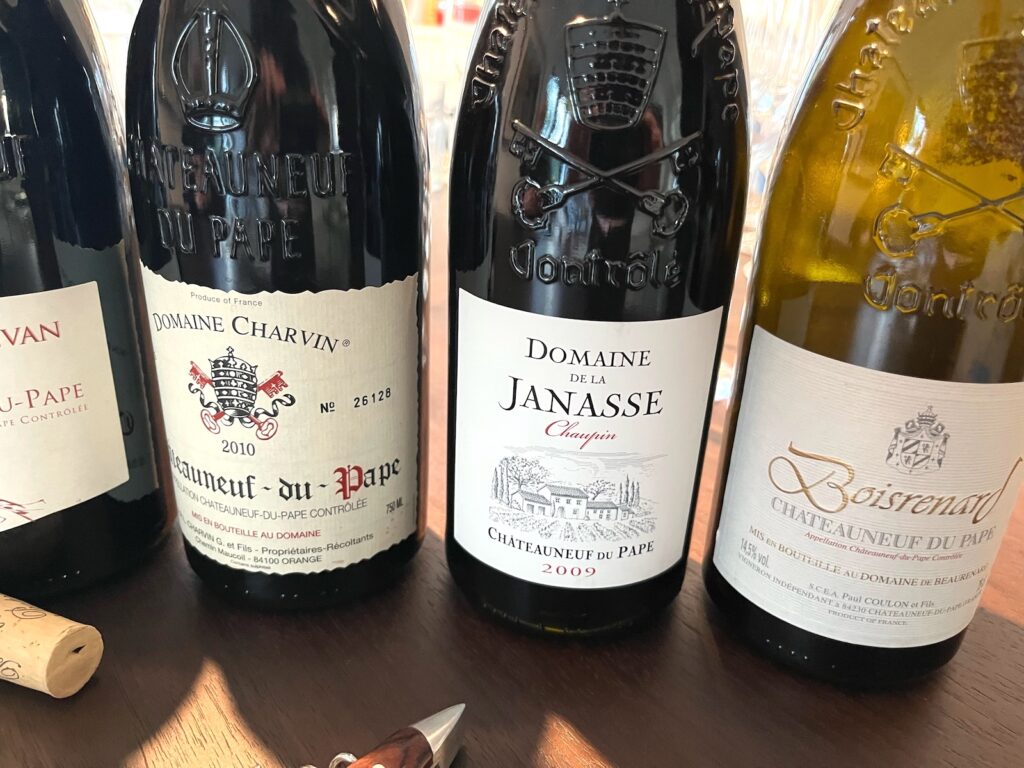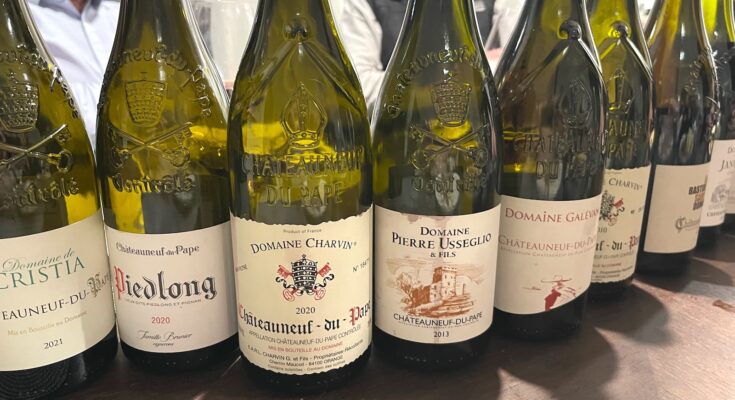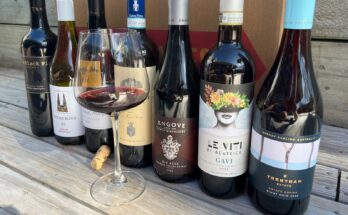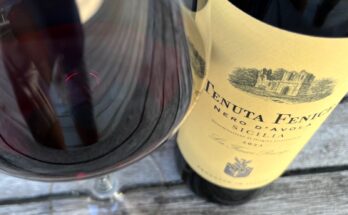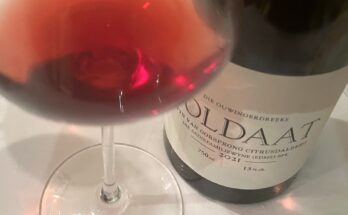I’m seeing a real renaissance in interest in Rhône wines this last 12 months. From the top wines of Côte Rotie and Condrieu in the north, down to Gigondas and Châteauneuf-du-Pape in the south. Chunky (and great value) Côtes du Rhône reds and the whites too, are showing up on tables everywhere I go – whether it is on winelists or at people’s homes. It’s definitely a thing. No surprise then that a fellow wine-lover invited our group for an evening’s tasting of Châteauneuf-du-Pape at his home in Auckland last week.
Châteauneuf-du-Pape is one of those well-known appellations where drinkers don’t always know what they’re getting in their glass (unless they’ve used the internet to investigate their bottle). The most important grape in Châteauneuf-du-Pape is Grenache. However, 13 different grape varieties are allowed to be used, by AOC laws: Cinsault, Counoise, Mourvèdre, Muscardin, Syrah, Terret Noir, Vaccarèse, Grenache Blanc, Bourboulenc, Clairette Blanche, Picardan, Roussanne, and Picpoul!
The reds are the obvious headliners in the region, but they do also make some very good whites. Now, my opinion has, over the years, been to age your Châteauneuf-du-Pape reds for ten years before drinking, but drink the whites young – within five years of release. That’s a personal preference but I find it suits the wines, not just me. I’d probably say the same of Côte Rotie and Condrieu. Drink the reds with a decade of age, and the Viognier fresh and young. The evening gets underway with an example of Châteauneuf-du-Pape white – Domaine de Cristia 2021. Made of 60% Clairette and 40% Roussanne, it’s both fresh and crisp, and richly spicy. Stonefruit, honey, white chocolate and satsuma merge into a lovely rounded glassful. I’m a fan of Roussanne generally, and this is a winner.
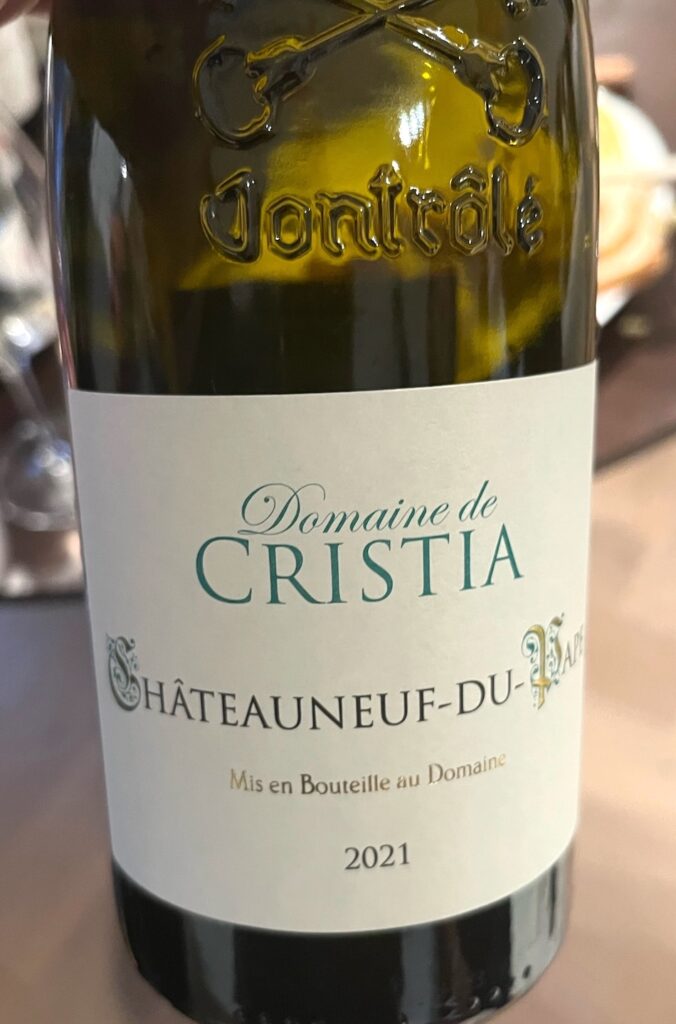
A couple of 2020 Châteauneuf-du-Pape reds show up quite well considering their youth. To be fair, the Domaine la Roquete Piedlong 2020 was a wine that Maison Vauron advised as being probably the best of their stock to be ‘drunk young’ to the buyer who brought it along. And so it appeared. A good crunch of primary fruit – it is 90% Grenache and 10% Mourvèdre – with liquorice, bramble and dried herbal notes. I also like this balance of Grenache with a splash of Mourvèdre – it pops up again later this evening. I just think it has a simplicity, balance and focus that works. The other youngster – Domaine Charvin 2020 shows a more complex, but classic blend of 82% Grenache, 5% each of Syrah and Mourvedre, and the rest Vaccarese and Counoise. I have huge respect for the wines from Laurent Charvin, offering excellent value and quality for the price. The 2020 is a super wine, but difficult to really assess as it is so closed and austere right now. The potential is there – rich, minerally and textured, but a bit of a waste to open it now.
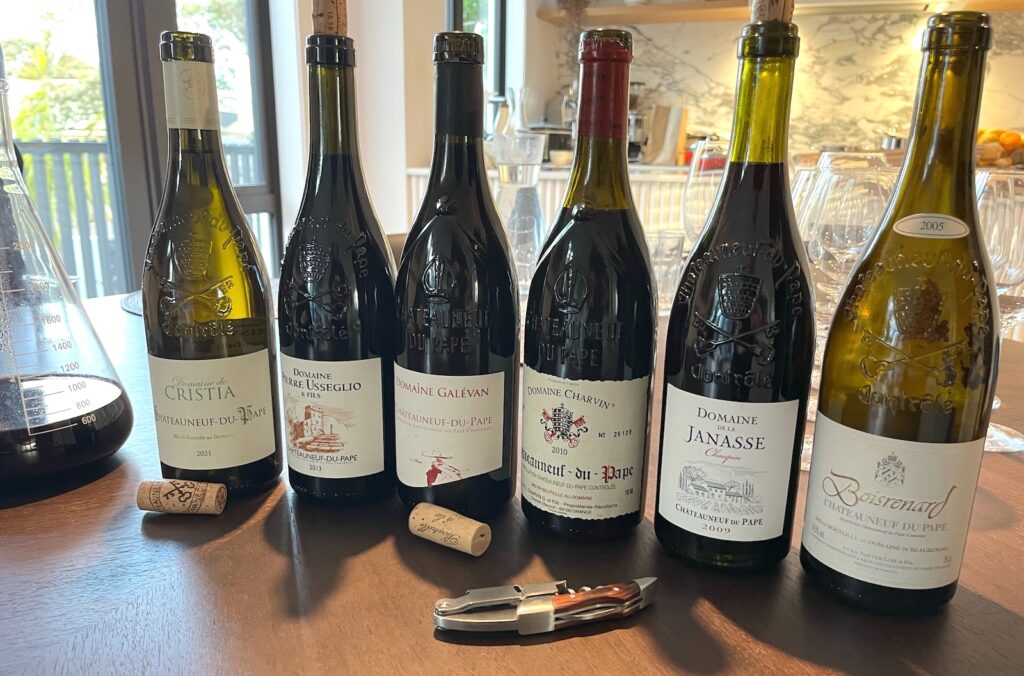
A decent leap of age moves us into what I’d think of as the prime drinking window for these. Domaine Pierre Usseglio & Fils 2013 is the first to have that wow of floral perfume from the glass. 60% Grenache, 25% Syrah, 10% Mourvèdre and the rest Cinsault sees a move away from the higher proportion of Grenache into what I’d see as a more ‘GSM’ blend. But this is a cracking wine. Raspberry, plum, roasted spice, pepper and lashings of that distinctive Provençal garrigue. Soft tannin and a quietly serious structure – this will go another ten years easily. Domaine Galévan 2012 isn’t from a well-known Châteauneuf-du-Pape producer – they only have a small 2-hectare plot in the appellation, and are better known for their Côtes du Rhône wines. But this 90% Grenache and 10% Mourvèdre blend sits up nicely. A balance between youthful fruit-forwardness and some secondary complexity emerging.
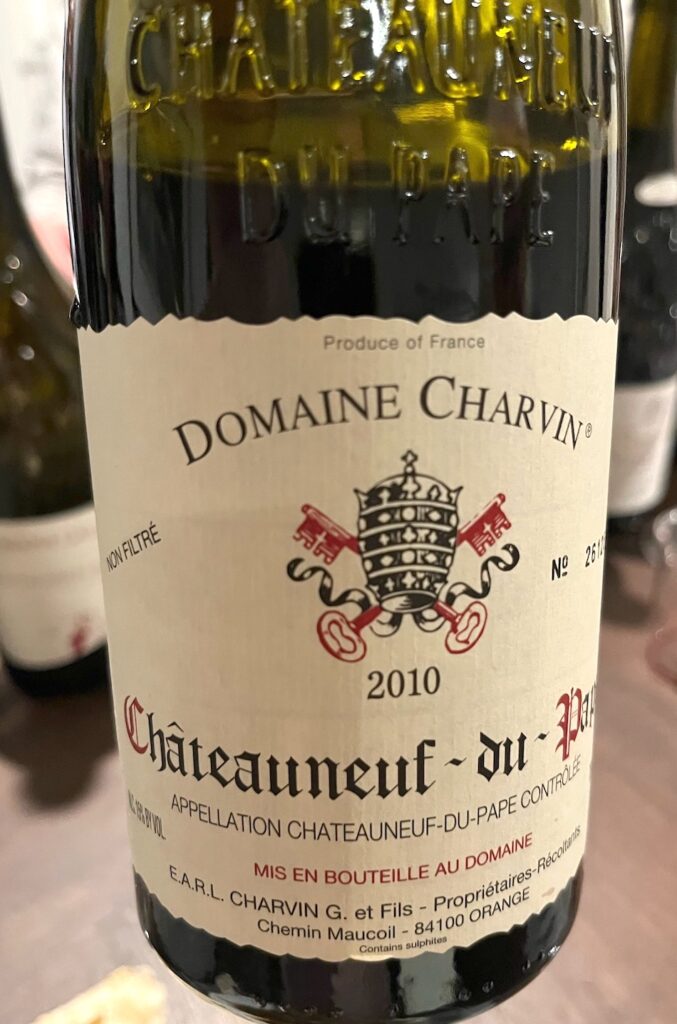
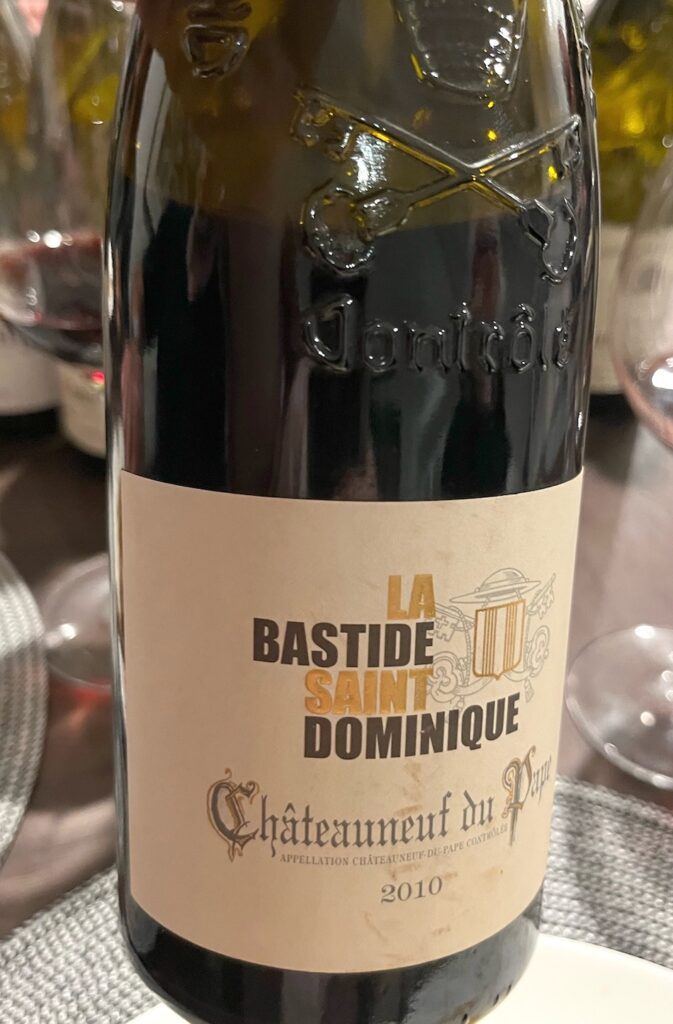
Domaine Charvin 2010 is the second showing from this producer, and, as I’d expect, knocks it out of the park. Yes, you can pay more for Châteauneuf-du-Pape, but you’ll not necessarily find better than Charvin. A heady, smoky perfume leads to a concentrated, exotic palate brimming with ripe fruit, spice, minerals but also a fresh sappiness that is just delicious. After this, it’s just settling back and enjoying the evening, thinking about what else will make a podium finish. La Bastide Saint Dominique 2010 only suffers slightly from sitting directly after that Charvin in the line. 80% Grenache, 10% Syrah, 5% Mourvèdre and 5% Cinsault seems to be the blend here. Superbly aromatic, and then silky smooth on the palate, with lots of interesting layers of flavour – rose petal, cherry, cinnamon and a ripe, punchy sweetness to the fruit – very nicely mature and ready. I think I found my runner-up.
Domaine de la Janasse Chaupin 2009 also sits well in that 10-15 year drinking window. A full-bodied density and power is on show, with some quite heroic tannin in the mix. I like this, but it could easily be hidden away for another ten years before really showing its best. I’m also going to have to skip over the oldest wine that was opened tonight – Domaine de Beaurenard ‘Boisrenard’ 2005, as, to my tastebuds, it was corked. That’s the risk you take with any wine under cork – particularly an older vintage. Again, it is probably more my opinion than anything, but corks from five years at either side of the turn of the century – so from mid-90s through to around this time (2005) are notoriously faulty. That’s a sweeping statement, but it is what I’ve encountered. Thank God for the screwcap.
